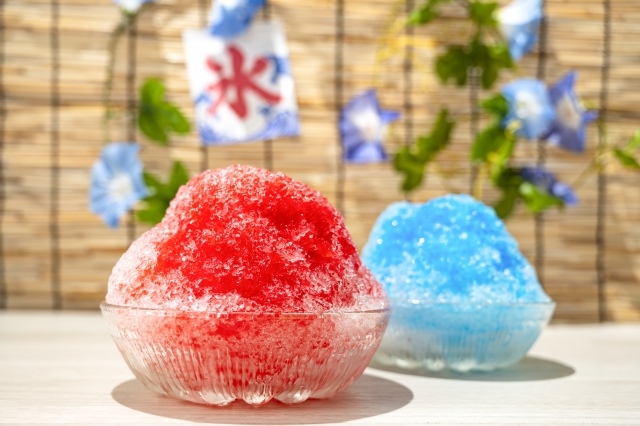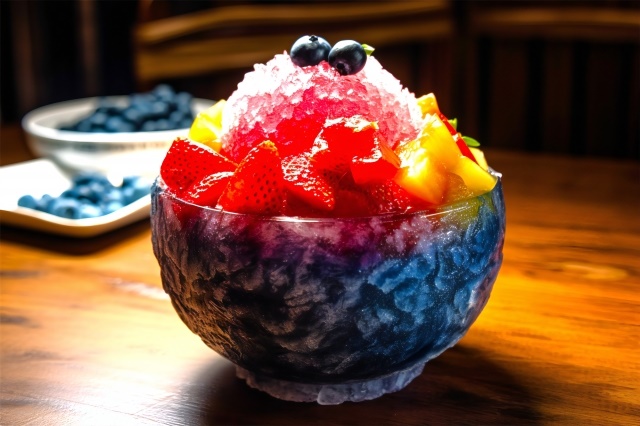Basic Information
Japanese traditional wagashi are confectioneries that value the flavor of their ingredients, and they come in an incredibly diverse array of methods and varieties. Particularly distinctive are the sweets made from rice and unique Japanese desserts that differ from Western sweets. In this installment, we will introduce these wagashi (Part 2).
Senbei
Senbei are traditional Japanese crackers made from rice, typically flavored with salt or soy sauce, or sweetened. They are baked to have a crisp texture.
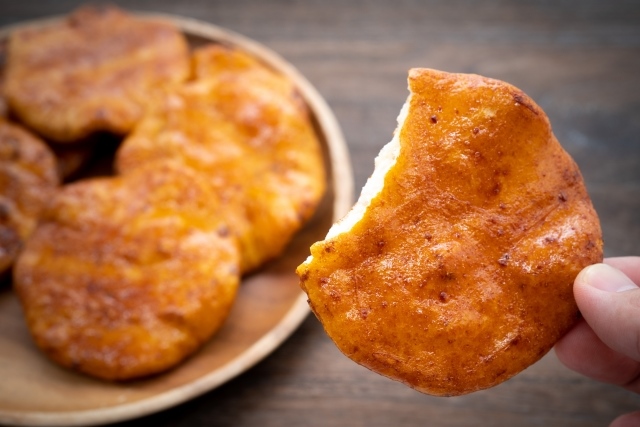
Arare
Arare are small Japanese sweets mainly made from rice, which are either baked or fried. They often come salted or flavored with soy sauce, and some types are wrapped in seaweed.
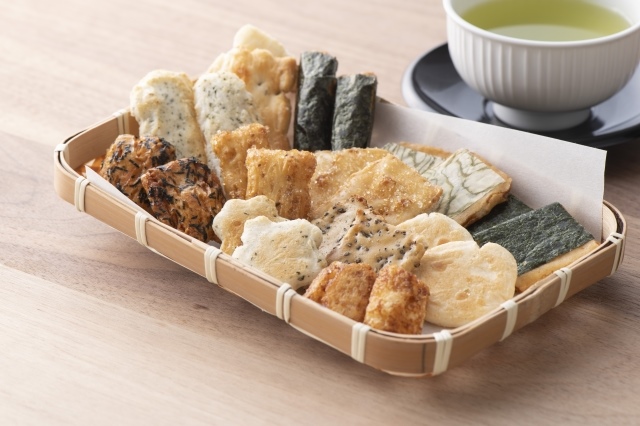
Sasadango
Sasadango are wagashi made from mochi rice flour, filled with anko (a paste mainly made from azuki beans and sugar), wrapped in bamboo leaves, and then steamed. They have a characteristic chewy texture, and a distinct aroma that lightly emanates from the bamboo leaves.
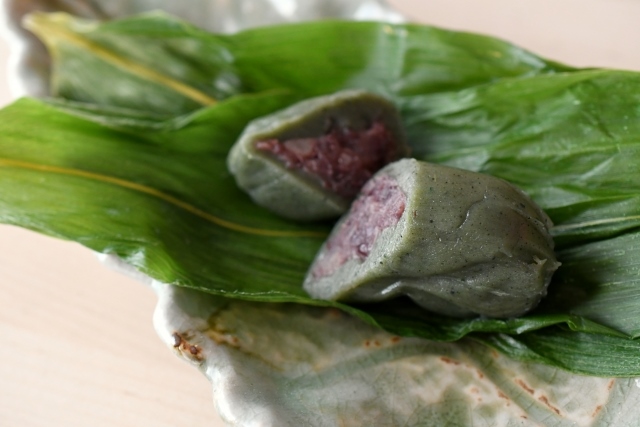
Yatsuhashi
Yatsuhashi is a popular wagashi in Kyoto, consisting of a cinnamon-flavored mochi rice dough filled with anko. Sometimes it is baked, but it can also be eaten raw. In the latter case, the dough has a chewy texture.
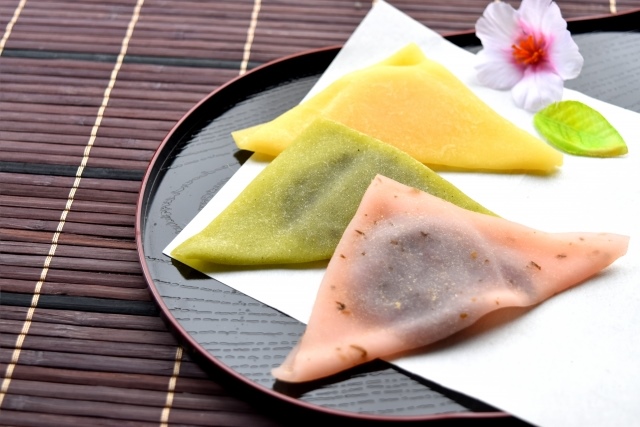
Youkan
Youkan is a jelly-like wagashi with anko as its main ingredient, solidified with agar or starch. Depending on the type, it can offer various textures, ranging from solid to fluid.
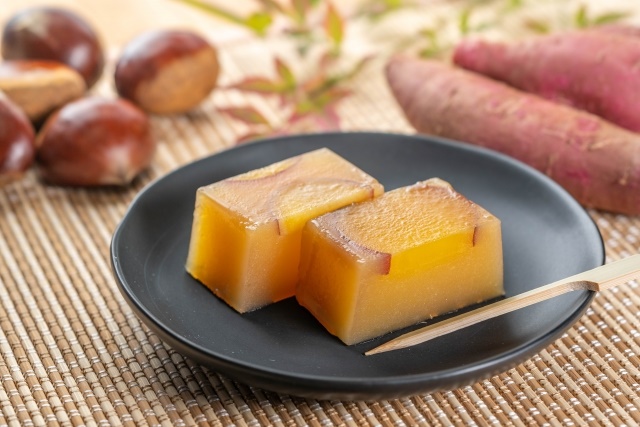
Anmitsu
Anmitsu is a dessert primarily made from agar, black syrup, and anko, often topped with fruits. It’s a cold dessert that’s especially popular in summer, featuring a refreshing texture from the agar and sweetness from the black syrup.
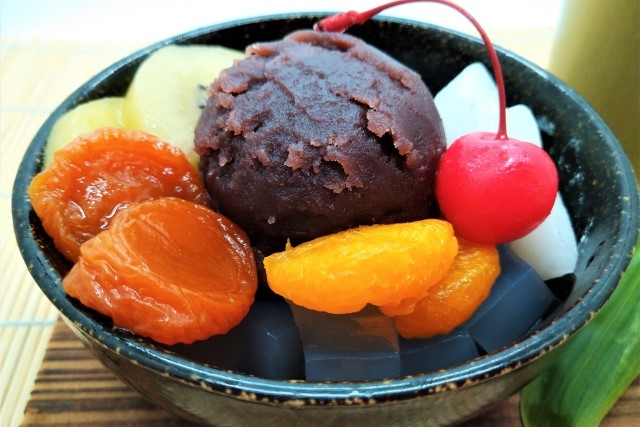
Kakigori
Kakigori is a dessert of shaved ice with sweet syrup poured over it, especially popular during the hot summer season. It comes in various syrup flavors, and ones topped with fruits are also popular. The chilly coldness and the sweetness from the syrup are its defining features.
